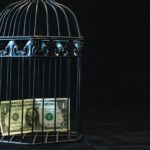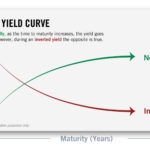This article, written by Rich Vesel – Founder of Advanced Projections, was originally written for and published by Advisor Perspectives, linked here.
We all heard the Federal Reserve pronouncements back in mid-2021 about the likely “transitory” nature of inflation, which was incipient at that time. The unemployment rate had just dipped slightly below 6% for the first time in over a year. Unknown to the Fed, there would be two more deadly waves of COVID (delta and omicron), and persistent supply chain problems from overseas product and commodity sources. The Fed never makes ominous warnings. Rather, it has cajoled and soft-peddled bad news until it becomes apparent to the public that it would have to frankly address that bad news head on.
Such is the case with inflation.
Of the Fed’s two target mandates, full employment and stable pricing, it clearly prioritizes a solid employment picture. It chose not to address the rising threat of inflation until the employment picture reflected an economy that was healthy enough to withstand an assault on inflation. A plan was scripted and put forth in November, and then quickly accelerated in December. Implementation began in March of this year and continued with additional significant rate increases in May and June. The M2 money supply is also beginning to decline due to Fed actions with the unwinding of its balance sheet.
I expect more of the same throughout the remainder of this year and into 2023.
There is a lot of “happy talk” swirling about that the Fed will not be inclined to continue in like manner for very much longer, and that inflation will quickly be tamed, or the markets will suffer enough angst to cause it to dial back its plans. I don’t see this as being very likely at all. Inflation will prove annoyingly persistent at levels far above the desired 2%.
Here is why:
- Wages have grown and will continue to do so as long as unemployment remains below 5%. Those costs will be passed to end users. The quantum leap year-over-year consumer price increases in all areas will be met with demands for incomes to match those increases, keeping upward pressure on wages.
- Energy costs will remain high: Oil will decline in the face of an incipient recession, but natural gas and electricity prices will remain high indefinitely longer. Significant portions of our domestic natural gas supplies are being sold and exported as LNG into high-priced global markets, driving up domestic prices substantially (more than doubling in the past year). This affects our own electricity costs, as natural gas produces about 40% of our power. Home energy costs will be in the spotlight, first during the high part of the air-conditioning season, then again as winter approaches. Industrial energy costs will pass through to product and service end-users.
- Rents are up an average of 14% across residential properties nationwide, taking a further big bite out of household income. There is nothing on the horizon that could reverse this trend.
- Increasing interest rates will drive the cost of servicing existing household debt, as much of it is based upon variable rates.
- In the first quarter of 2022, overall non-farm productivity declined an astonishing 7.3%, according to the Bureau of Labor Statistics. This further contributes to the rising cost of goods.
- The Fed will continue to address the inflation challenge with a long and aggressive, and eventually painful, series of rate increases and money supply contractions. It has already provided a script and taken the initial steps, but so far have done its best to soft-peddle the hard realities of what it will have to do – as well as for the likely consequences.
The Fed doesn’t give a hoot about what stock prices do, as long as the underlying corporate financial structure remains stable.
This was reflected in its unprecedented willingness to underpin the corporate debt market with a $4 trillion purchase facility during the initial phases of the COVID rescue. By the end of 2020, it appeared that mere existence of such a facility had done its job, reassuring the corporate finance markets of a commitment to stability, while the facility itself went almost completely unused. The Fed let it this facility expire quietly on Dec 31, 2020.
In fact, a further significant decline in equity prices would assist the Fed in its inflation fight. The associated decline in equity prices would significantly reduce the “wealth effect,” reducing demand for money, goods, and services. That alone could prove to be a significant victory in the Fed’s battle.
My expectations are fairly straight forward:
Inflation will be the primary driver of Fed monetary policy as long as unemployment remains below 5%, and inflation persists above 4%, so there is plenty of headroom and motivation for it to act aggressively. The characteristics of a realistic “soft landing” would be for a slow rise in unemployment towards 5% while inflation declines at a moderate pace to below 3%. That will take many months, perhaps even two years or longer. A recession is still very likely, and leading indications of a recession are saying it is certain to occur “soon.”
A harder landing scenario would see inflation persisting above 5% much longer than most of us would like to anticipate, despite the Fed’s staying on its initially proposed track. That would push it to “shock the markets” – all of them – with more aggressive rate increases. Collateral damage would be to be a hard braking of economic activity, a deeper recession, with unemployment quickly pointing back towards 6%, and equity prices suffering greatly, dwarfing the losses already suffered in 1H2022.
The latter would be characteristic of what control theory calls “overshoot.”
The Fed is trying to control a very complex system with only two control variables (rates and money supply), and an additional psychological “process influence”: public rhetoric. That can range from candidly realistic and transparent to quiet and opaque. I see this Fed as greatly tending towards the former, much to its credit.
Fig. 1 Simplified view of the process control theory view of “overshoot”

See More from Advisor Perspectives:
https://www.advisorperspectives.com/articles/2022/07/16/why-inflation-will-not-go-quietly-into-the-night
https://twitter.com/AdvPerspectives
https://www.linkedin.com/company/advisor-perspectives






